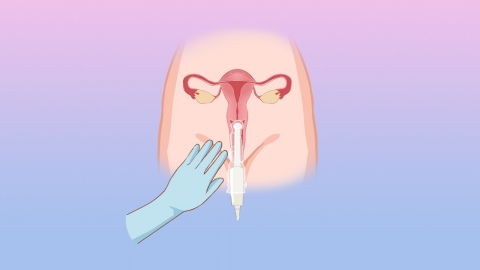What tests are needed for abnormal uterine bleeding?
Abnormal uterine bleeding generally requires gynecological examination, ultrasound examination, blood tests, hysteroscopy, and pathological examination. If concerned, it is recommended to seek medical consultation early. Detailed analysis is as follows:

1. Gynecological examination: Visual inspection of the vulva, vagina, and cervix for lesions, use of a speculum to examine the cervical os for bleeding points, and bimanual examination to assess the size, shape, and position of the uterus and to detect any masses or tenderness in the adnexal region. This examination can preliminarily determine whether the bleeding originates from local vaginal or cervical injury or inflammation.
2. Ultrasound examination: Transabdominal or transvaginal ultrasound is used to observe the structure of the uterus and adnexa. It can clearly show the thickness of the endometrium, presence of polyps or fibroids, and ovarian cysts. Uneven thickening of the endometrium may suggest endometrial pathology; detection of uterine fibroids compressing the endometrium may explain the cause of bleeding.
3. Blood tests: A complete blood count is performed to determine the presence of anemia or infection, coagulation function is assessed to rule out coagulation disorders, six sex hormone levels are measured to evaluate endocrine status, and thyroid function is tested to exclude abnormal bleeding caused by thyroid disease, thereby identifying systemic causes of bleeding.
4. Hysteroscopy: A hysteroscope is inserted through the vagina and cervix into the uterine cavity to directly visualize the intrauterine environment. This method can detect subtle lesions not easily identified by ultrasound, such as endometrial hyperplasia, submucosal fibroids, or early lesions of endometrial cancer, and can also locate suspicious pathological areas.
5. Pathological examination: Endometrial tissue is obtained via hysteroscopy or diagnostic curettage and subjected to pathological analysis. Microscopic evaluation of cellular morphology helps determine whether benign or malignant changes exist in the endometrium. This is a crucial basis for confirming endometrial pathology and provides key information for subsequent treatment planning.
If abnormal uterine bleeding occurs, timely medical attention is necessary. Prior to the examination, follow the doctor's instructions for preparation, such as avoiding sexual intercourse and vaginal medication. After the examination, rest appropriately, maintain external genital hygiene, and seek immediate medical review if symptoms such as abdominal pain or fever occur.




